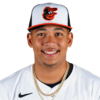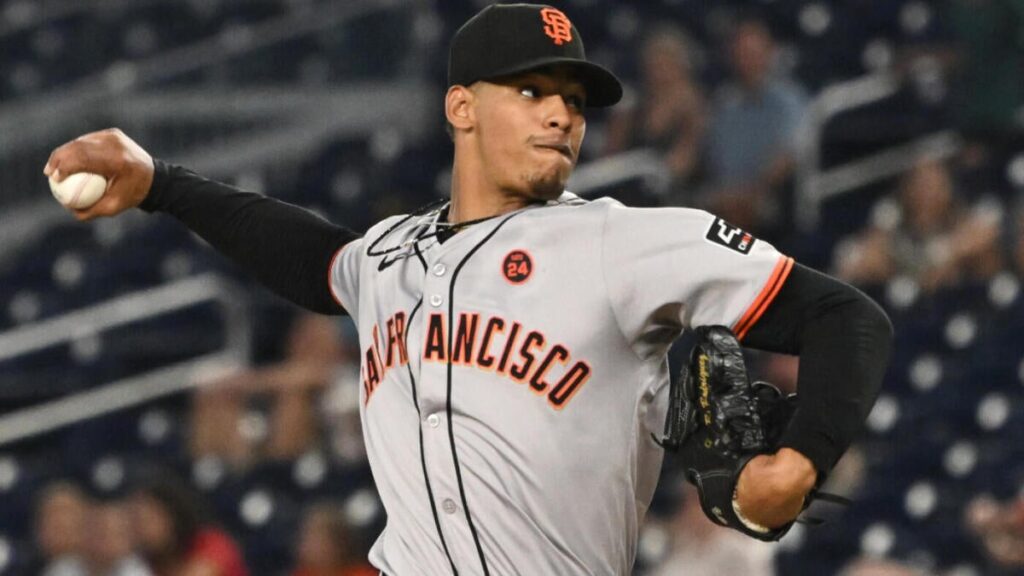The deals are done, and the dust is still settling from a typically frenzied trade deadline wherein a big number of things happened in a small amount of time.
If your head is still spinning, I’m guessing it’s over one role in particular: closer. Yes, nearly half the league has a new one — or at least a candidate to become a new one. Given the importance of saves to most Fantasy leagues and the extent they contribute to a relief pitcher’s value, an honest accounting of the biggest winners and losers from the trade deadline would consist entirely of closers. It would also be highly speculative since most teams have yet to announce what they intend to do with their newly acquired relievers or their newly created vacancies.
So I’m not going to fixate on that. Instead, I’ll lump all the incoming closers together as a singular winner and all the outgoing closers together as a singular loser. This will allow me to focus on some of the other deadline developments worth mentioning. If you want a more complete breakdown of the bullpen pandemonium, Chris Towers will have it elsewhere.
Or if you’re looking for a full recounting of all the trades that matter to Fantasy Baseball, the Trade Deadline Tracker is where you’ll find it. Chris and I were furiously typing through the deadline to keep that one updated in real time.
In case it needs to be said, these winners and losers are with regard to Fantasy Baseball. If you’re asking who won in real life, the Padres seem like the obvious choice, though they gave up a hefty prospect cost, namely blue-chip talent Leo De Vries. If you’re asking who lost in real life, well, somehow the Braves didn’t manage to sell off any of their tradeable assets. Raisel Iglesias’ and Marcell Ozuna’s value may be at an all-time low, but surely some contender could have used them, right?
But enough of that serious stuff. Let’s talk Fantasy.
Winner: The incoming closers
The two biggest trade deadline winners fit into this category, and they are as follows:



The numbers provide half the explanation. The other half is that Randy Rodriguez and Dennis Santana are the heirs apparent in San Francisco and Pittsburgh, two teams that traded away their closers at the deadline. There’s a small percentage chance that the Giants turn to Ryan Walker instead, given that he was their closer at the start of the year, but Rodriguez has been working the higher leverage spots in recent months and is clearly the better choice. I think manager Bob Melvin gets it, and I’d dump truckloads of FAB dollars on Rodriguez in leagues where saves are scarce, with Santana presenting a nice fallback option.
Other teams with a new vacancy at closer include the Cardinals, Twins, and Nationals, but I wouldn’t say any of their relievers deserve as much enthusiasm. My best guess for the next man up would be JoJo Romero for the Cardinals, Cole Sands for the Twins, and Jose Ferrer for the Nationals, and that’s how I’d prioritize them on the waiver wire. An uneasy committee could be the actual answer in all three situations.
There’s also the curious case of Jack Perkins, who has shown good bat-missing ability in the Athletics bullpen and already has three saves. Those saves were all of the multi-inning variety, though, and I think there’s a better chance of him replacing JP Sears in the rotation than replacing Mason Miller as the closer. He might be worth a flier either way.
Finally, shout out to Daniel Palencia, who managed to escape the deadline without forfeiting his closer gig for the Cubs.
Loser: The outgoing closers
As I hinted in the intro, most of the teams that chose to double up at closer (or triple up, in the Yankees’ case) have yet to announce who will work what inning, which forces us to speculate. It means you’ll probably want to hold onto everyone with a chance of closing games until we see how things play out, which is annoying, but I can offer my best guesses here.
- Robert Suarez loses out to Mason Miller with the Padres despite being the current MLB saves leader. Miller is simply better, and as bad as it was for the Padres to give up top prospect Leo De Vries for a closer, giving him up for a non-closer would be even worse.
- David Bednar and Camilo Doval lose out to Devin Williams with the Yankees. Manager Aaron Boone has already confirmed as much, but given how shaky Williams has been, these acquisitions leave him with zero margin for error. I would guess Bednar is next up rather than Doval.
- Ryan Helsley loses out to Edwin Diaz with the Mets. I don’t see anyone arguing otherwise.
- Kyle Finnegan loses out to Will Vest with the Tigers. Finnegan is more of a “proven closer,” but manager A.J. Hinch has never been one to buy into such labels. Vest is simply better.
Griffin Jax, who is now with the Rays, and Phil Maton, who is now with the Rangers, weren’t actually closers for their former clubs, but you could argue they’re better than Pete Fairbanks and Robert Garcia, respectively. Don’t expect an immediate change, but you’ll want to keep an eye on those situations.
Long a fixture near the top of prospect rank lists, Lawlar is overdue for an extended look in the majors (as opposed to the cursory ones he’s gotten so far), and the deal that sent Eugenio Suarez to the Mariners frees up third base for him with the Diamondbacks. The only problem is that he’s sidelined by a hamstring right now, but judging by the initial timeline, he should be nearing a return. I’d say he’s the top prospect to stash in light of this development, and I would expect him to make a Fantasy impact over the final six weeks of the season.
Though he bounced around the diamond, Castro was an everyday player for the Twins and a viable option in Fantasy, but there wouldn’t seem to be as many at bats available to him in Chicago. He’ll still bounce around the diamond, but with as good as the Cubs’ hitters are, he won’t find his way into the lineup too often. The one exception might be third base, where rookie Matt Shaw has struggled to find his footing but should have favored status after batting .359 (14 for 39) with four homers and three steals in his past 12 games. Maybe in the long run, he’ll be the one who loses out rather than Castro, but I don’t think that’s where things stand now.
Winner: The Orioles’ young bats
The Orioles traded away three members of their starting lineup — center fielder Cedric Mullins, first baseman Ryan O’Hearn, and right fielder Ramon Laureano — which should free up the backlog of talent that’s developed over the past couple years. One of those spots will go to Ryan Mouncastle, who’s hitting well on his rehab assignment and soon to return from a hamstring injury, but Coby Mayo, Samuel Basallo, and Dylan Beavers, all current or very recent prospects, could be in play for the other two. Mayo has an edge since he’s already on the major-league roster and has begun showing signs of living up to his potential, finally, batting .350 (7 for 20) with two homers and two doubles in his past eight games, but Basallo and Beaver are doing plenty of damage at Triple-A.




I would say that if Mountcastle and Mayo are already occupying the first base and DH spots, the advantage goes to Beavers simply because he can play the outfield. Basallo, while technically listed as a catcher, profiles as more of a first base or DH type himself.
Loser: Ryan O’Hearn
The Padres acquired O’Hearn because they thought he represented an upgrade over Gavin Sheets, and perhaps he does. But he was trending the wrong direction with the Orioles, batting .227 with a .699 OPS since the start of June, and is now going to one of the worst home run venues for left handed hitters. Statcast estimates that he’d have only 10 home runs playing every game there, vs. the 13 that he actually has. Worse yet, because the Padres have something to play for, they’re even more likely to sit him against left-handers than the Padres were. He may be done as a usable option in standard-size leagues.
The Josh Naylor acquisition couldn’t have come at a worse time for Locklear. He was making his case for a call-up, batting .387 (48 for 124) with 14 homers and a 1.261 OPS over a 32-game stretch at Triple-A, but there was simply no place for him anymore. So the Mariners found a place for him: the one that Naylor left behind in Arizona. The Diamondbacks ended up acquiring Locklear in a separate deal for Eugenio Suarez and plan to install him as their first baseman right away. Though the 24-year-old hasn’t gotten much prospect acclaim, that’s partly because he’s a right handed hitting first baseman, which is a profile too easily squeezed out of major league consideration. Locklear is getting all the consideration he could ask for now and has good enough plate discipline and exit velocity readings to suggest it’ll stick.
Speaking of surging prospects, none fits that description more than Jones, whose 19 home runs in his past 34 minor league games have made him a sudden sensation. Clearly, he’s clamoring for a call-up — and in most organizations, he would have gotten one already — but the Yankees outfield is overloaded as it is. Some thought his best use to them would be as a trade chip, but no deal materialized, and by most accounts, the Yankees weren’t willing to consider moving him anyway. So he remains stuck at Triple-A, biding his time until an injury clears the way.
Winner: The Astros’ new bats
I’m referring to Carlos Correa, who the Astros acquired from the Twins, and Jesus Sanchez, who they acquired from the Marlins. The former is more than just s heartwarming reunion between a homegrown talent and the team he led to the World Series. Daikin Park is one of the most favorable venues for right handed hitters, and by the Statcast readings, Correa has been a massive underachiever this year for the Twins. I’m not expecting miracles or anything — Correa’s bat didn’t always perform up to snuff during his previous stay in Houston — but I expect him to be better than he’s been so far. He’ll be transitioning to third base, for what it’s worth.
As for Sanchez, again, I’m not expecting miracles, but he’s always been tantalizing, delivering plus exit velocities (87th percentile average and 94th percentile max this year) without the power production to match. The Astros have more of a reputation for maximizing player outcomes than the Marlins do, and perhaps have a plan for getting Sanchez to elevate the ball more.
The trade deadline was supposed to be Keller’s knight in shining armor, rescuing him from those wretched Pirates who’ve shackled him with a 4-10 record. It turns out he came willingly, having signed a contract with them through 2028, and so they had little incentive to part with him. He’s more good than great, no matter what team he pitches for, but his ability to work deep into games might have seen him flip that win-loss record for a team like the Cubs.

